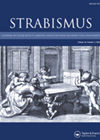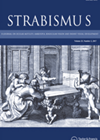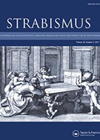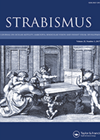
Journal Reviews
Choice of cycloplegia regime
The purpose of this randomised control trial (RCT) was primarily to compare the refractive outcome of atropine 0.5% (A) instilled twice daily at home 2.5 days before measurement versus two drops of 1% cyclopentolate (CC) in one eye versus one...
Combined recession surgery with Bupivacaine injection
The aim of this study was to evaluate the amount of correction of sensory strabismus with Bupivacaine injection combined with antagonist muscle recession. This was a prospective study of nine patients aged 43.5 ±12.3 years; six males and three females....
Inferior oblique adherence syndrome
A case is reported of a 14-year-old with inferior oblique muscle adherence and fat adherence following unilateral inferior oblique (IO) anteriorisation. Following surgery, the patient developed consecutive esotropia, ptosis and marked limitation of laevoelevation. Forced duction test was positive for...
Global prevalence of strabismus
With a need for relevant information to design plans for screening, early diagnosis and timely management, the aim of this study was to present a systematic review of the sources to provide an estimate of the global prevalence of strabismus...
Functional outcomes after exotropia surgery
The authors used the Chinese version of the AS20 and A&SQ questionnaires to explore if successful postoperative alignment could significantly improve health related quality of life (HRQOL) in adults with childhood large angle exotropia. They further evaluated the relationship between...
Consecutive exotropia features
This study sought to detect abnormal scleral attachment with comparison of histopathological findings in consecutive exotropia. The study also considered the success rate of medial rectus resection and advancement, dose response and evaluate potential preoperative factors that might indicate presence...
Prism adaptation outcomes in convergence excess esotropia
This study reports the changes to angle of deviation following prism adaptation in a group of 58 patients with convergence excess esotropia and their surgical outcomes. Age at prism adaptation was 7.2 (SD1.82) years. One child refused prisms and two...
Microtropia as an amblyopia indicator
This study was undertaken to determine if microtropia with identity (straight eye anisometropia) is a reliable indicator of amblyopia following optical correction. This was a retrospective review of 532 children aged four to five years. After two months of glasses...
Corpus callosum in infantile esotropia
Diffusion tensor imaging (DTI) imaging was undertaken with four infantile esotropia (IE) patients and nine controls. All with IE showed an asymmetrical distribution of callosal fibres when comparing two hemispheres. Many fibres terminated near the tips of the occipital cortices....
Genetic profiles of primary strabismus
The authors explore the pedigree analysis of familial cases of primary concomitant strabismus (PCS) to unravel the genetic determinants of this strabismus. Of 2301 cases of PCS, 39 (1.7%) had familial clustering. This study recruited 18 families with esotropia and...
15 prism test for anisometropic amblyopia
The authors aimed to investigate the accuracy of the 15^ base in prism test (BIPT) in detecting amblyopia in anisometropic patients. This was a retrospective study in which the 15^BI was placed before the right eye followed by the left...
Choroidal thickness in strabismus and amblyopia
The authors examined the effect of exotropia, esotropia, anisometropic amblyopia and hypermetropia on choroidal thickness in a prospective cross section study. The study included 100 patients and 20 controls with a mean age of 8.5±2.9 years; 61 female and 59...








